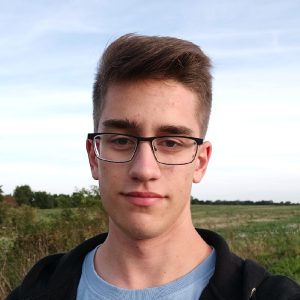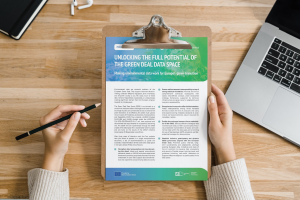
Alisa Rozdestvenskyte, Media Informatics student at RWTH Aachen University, has gained valuable experience working at Fraunhofer for nearly two years.
Supporting education is crucial for the AD4GD project, not only as we enhance the skills and expertise of students but also contributes to achieving SDG 4: Quality Education. Educational support facilitates collaboration between academia and practical fieldwork, bridging the gap between theoretical knowledge and real-world applications.
In this instance, we are featuring Alisa Rozdestvenskyte, a Media Informatics student at RWTH Aachen University, who has gained valuable experience working as a student assistant at Fraunhofer for nearly two years. During her tenure, Alisa has contributed to various projects, including the AD4GD initiative. Her involvement in AD4GD has allowed her to apply her academic knowledge in a practical setting, advancing the project’s goals while gaining hands-on experience. Her work has been fundamental in developing the back-end of the user interfaces for the AD4GD pilots, ensuring a seamless user experience and enhancing the overall functionality of the project.
You can read the full interview with Alisa Rozdestvenskyte below to gain deeper insights into her role and experiences with the AD4GD project. The interview was conducted by Diego de la Vega, Communications Technician at CREAF and the AD4GD project.
Diego: Could you introduce yourself?
Alisa: I’m Alisa Rozdestvenskyte. I studied for a master’s in Media Informatics at RWTH Aachen and just finished my studies. I worked at Fraunhofer for almost 2 years as a student assistant. During my time there, I worked on two projects, one of which was All Data for Green Deal.
Diego: What is your field of study about?
Alisa: Media Informatics includes a lot of topics such as machine learning, designing interactive systems, and computer graphics. I studied a bit of everything because it was mandatory, but my focus was on computer graphics, geometry processing, and designing interactive systems. This included user interface and frontend development, in which I gained some experience.
Diego: How did you get involved with the AD4GD project?
Alisa: My supervisor Constanze and I worked together on a different project. At one point, I asked her if I could help with anything else because I had some extra capacity. She suggested that I do some market analysis for AD4GD. That’s how I became involved in this project.
Diego: What have been your contributions to the project?
Alisa: I started with market analysis, then conducted deeper analysis with Constanze, Lena, and Florian. Based on the results, there was a Design Sprint, which resulted in paper prototypes. I recreated these prototypes in Figma and made them interactive. I created 2 of the 3 prototypes: the general interface and the prototype for Pilot One. I also developed a design system and applied it to both prototypes I worked on.
Diego: What have you learned from working on this project?
Alisa: I think the biggest challenge was implementing the design system because I had no prior experience with it. Thanks to Lena, who provided me with a lot of materials and guidelines, I was able to create a good design system. I also learned a lot about Figma, including how to use Figma components and apply the design system to existing prototypes. It was very interesting for me, and I had a lot of responsibility.
Diego: Why do you think the AD4GD project is important?
Alisa: I’m very curious about how this project will affect the work of the related scientists. From the general interface, the most interesting part for me was the idea of maps and how we can compare visual data on these maps from different datasets. I think it’s something very new because I didn’t see anything like this when I did the market analysis. I hope it will help scientists do their work better. I’m very eager to see how this will have an impact. It will be very interesting for me to hear the results and real feedback when the project is finished.
Diego: What is the most significant lesson you have taken away from working with AD4GD?
Alisa: Designing interfaces was definitely a major learning experience for me because I participated in almost the entire design pipeline. I learned how to present the interface to users, listen to their needs, and incorporate their feedback into the design. At times, I had to learn how to explain politely that certain requests were technically not possible. I also learned a lot while developing the design system, which was something I had never done before but wanted to learn. I’m very thankful for this opportunity.
Diego: Lastly, what are your future plans, if you have any?
Alisa: Yes, I have two options. One is pursuing a PhD in computer graphics, which is different from what we did in this project. The other option is to focus on software development and user interface design. That’s why the experience I gained from this project is very, very important to me.
Diego: Do you have any final comments?
Alisa: I would like to add that it’s a bit disappointing that I didn’t have the chance to continue working on this project now that my studies have ended. I would have liked to participate in frontend development as well. I think it would have been very interesting to complete the design pipeline.
We extend our heartfelt thanks to Alisa Rozdestvenskyte for taking the time to participate in this interview and for her significant contributions to the AD4GD project. Your work on developing the back-end of the user interfaces has been crucial to the project’s progress. We commend you for your efforts and dedication, and we wish you continued success in your future endeavors.





